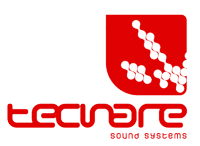Pro Subwoofer Alignment Techniques for Massive Live Events
Explore advanced subwoofer alignment methods like End-Fire, cardioid, and arc arrays to enhance bass control and SPL consistency at large-scale events.
Proper subwoofer alignment is a critical factor in the design and optimization of sound systems for large-scale events. Poor alignment can cause cancellations, unwanted boosts in certain areas, or an uneven SPL distribution. In this article, we explore the advanced techniques used by sound engineers to maximize subwoofer coverage and efficiency.
Subwoofer Alignment
1. Phase and Time Analysis
Precise alignment of subwoofers with the main system requires a thorough analysis of phase and signal arrival times. Measurement software such as Smaart, SysTune, or SATlive is recommended to evaluate the temporal relationship between subwoofers and full-range speakers.
-
Impulse Method: Measures the system’s impulse response and adjusts delays to synchronize the arrival of wavefronts.
-
Phase Method: Uses a phase analyzer to match the phase slope between subwoofers and main speakers, preventing cancellations in the crossover region.
The phase relationship between two signals can be described using the following equation:
Example with Tecnare: When using subwoofers like the SW218V alongside full-range speakers from the IBZA series, phase alignment is crucial to avoid cancellations at the crossover point.
2. Subwoofer Configurations
Different configurations optimize energy distribution in the venue:
2.1. Linear Configuration
Subwoofers are placed in a horizontal line with equidistant spacing. This technique increases directivity on the front axis and minimizes rearward propagation.
The optimal spacing between subwoofers in a linear arrangement can be calculated using:
Where:
- d is the distance between subwoofers..
- c is the speed of sound (343 m/s at 20°C).
- f is the operating frequency of the subwoofers.
2.2. Arc Configuration
Progressive delays are applied to subwoofers placed in a line to create a curved wavefront, achieving more uniform audience coverage.
Example with Tecnare: Applying appropriate delays to a series of SW218EB can generate a virtual arc covering an outdoor festival evenly.
2.3. End-Fire Configuration
Subwoofers are aligned in a row with increasing delays towards the front, resulting in significant rear cancellation and reinforcement in the audience direction.
The time difference between subwoofers in an End-Fire configuration is obtained using:
Example with Tecnare: In events requiring strict directional control, SW218V can be arranged in an End-Fire configuration to minimize sound pressure on stage.
2.4. Cardioid Configuration
Subwoofers facing forward and backward are combined with opposite polarities and specific delays to minimize rear emission. This technique is particularly useful for reducing energy on stage and improving intelligibility in the audience area.
Example with Tecnare: Configuring a cardioid stack with SW218EB and SW115 reduces sound contamination in the musician’s area.
3. Use of Processors and Filters
Digital processing systems such as the Tecnare DP4896 allow advanced filtering and equalization to optimize subwoofer response. It is recommended to:
-
Optimize Crossover Filters: Select appropriate slopes (Butterworth, Linkwitz-Riley, Bessel) to minimize phase shift in the transition zone.
-
Apply Parametric Equalization: Correct resonances and compensate for peaks in the frequency response.
-
Adjust Polarity and Phase: Test different configurations to achieve the best phase coherence in the transition zone with mid-high speakers.
Example with Tecnare: Using the DP4896 to adjust phase and equalization in a system with SW218EB and the V Series of Tecnare ensures powerful and precise bass reproduction.
4. Field Measurement and Optimization
Once the theoretical configuration is completed, in-venue measurements are essential to evaluate SPL distribution and phase coherence. It is recommended to:
-
Map SPL: Measure sound pressure levels at various points to identify areas of excess or deficiency.
-
Analyze Coherence: Verify phase correlation between subwoofers and main speakers.
-
Iterative Fine-Tuning: Implement minor adjustments in delays, equalization, and levels to refine the system based on real measurements.
Example with Tecnare: During a stadium concert, engineers can use a real-time analyzer to adjust the SW218V and CLa312 system according to venue acoustics.
Conclusion
The proper design and alignment of subwoofers in large events is a complex process requiring analytical tools, advanced acoustical knowledge, and a rigorous methodology. Combining real-time measurements, digital processors, and appropriate placement strategies maximizes system efficiency and provides a uniform, high-quality sound experience for the audience.


